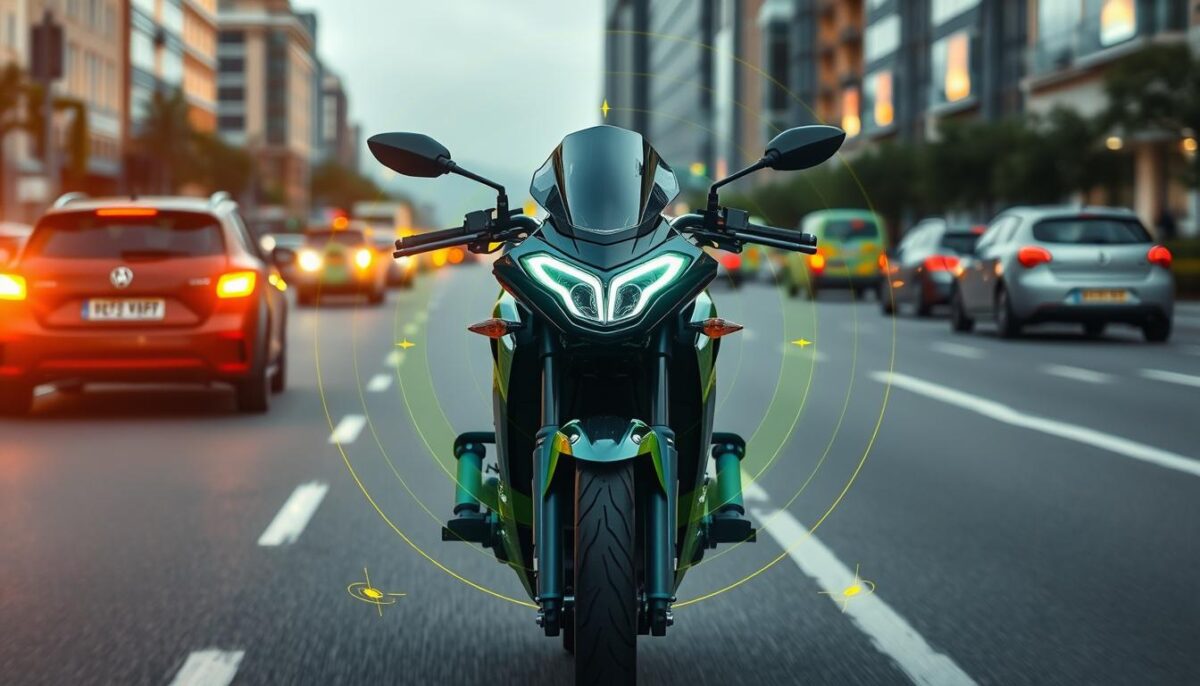In the ever-evolving world of motorcycle safety, riders are constantly seeking ways to protect themselves on the road. Traditional safety mechanisms often fail to account for the unique challenges faced by motorcyclists, making advanced safety technology, such as blind spot monitoring, a crucial addition to modern riding gear. These advanced systems are specifically designed to enhance motorcycle safety, allowing riders to be acutely aware of their surroundings and reducing the risk of accidents caused by unseen threats.
As awareness of road safety increases, integrating blind spot monitoring into the motorcycle experience is not just a personal safeguard—it also contributes to the overall safety of other road users. By understanding and embracing this technology, motorcyclists can significantly improve their riding experience and protective measures.
The Importance of Motorcycle Safety and Awareness
Motorcycle safety is an essential aspect of road usage that requires heightened awareness from both riders and other drivers. One of the most pressing issues confronting motorcyclists involves blind spots, areas around vehicles that are not visible in mirrors. These blind spots create a perilous environment and contribute significantly to motorcycle hazards. It is crucial for riders to be educated on these risks to improve their safety on the road.
Understanding the Dangers of Blind Spots
Blind spots are particularly dangerous for motorcyclists. Many drivers are not attentive to smaller vehicles, leading to life-threatening situations for those on motorcycles. Safety measures such as increasing motorcycle awareness through education can mitigate these dangers. Riders must develop an understanding of where these blind spots typically exist and adopt defensive strategies to remain visible to other road users.
Statistics and Trends in Motorcycle Accidents
Current statistics reveal concerning trends in motorcycle accidents. The Insurance Institute for Highway Safety reported that approximately 5,579 motorcyclists lost their lives in crashes during 2020. Many of these tragedies occurred when drivers failed to recognize motorcyclists in their blind spots. A breakdown of relevant safety data and tools can be found here, highlighting the need for improved awareness and deliberate safety measures to prevent future incidents. Understanding the causes behind these accidents can lead to a significant reduction in fatalities and injuries.
Enhancing Motorcycle Safety with Advanced Blind Spot Monitoring Systems
Understanding how blind spot monitoring works is crucial for modern motorcyclists. As motorcycles gain popularity, the integration of advanced technologies enhances rider safety. These systems primarily serve to reduce the risks associated with blind spots, which have historically been a significant factor in many accidents.
How Blind Spot Monitoring Works for Motorcyclists
Blind spot monitoring systems use various sensors strategically placed on the motorcycle to detect nearby vehicles. When another vehicle enters the blind spot, the system issues visual or auditory alerts to the rider. This real-time feedback helps motorcyclists make informed decisions while navigating traffic. Advanced motorcycle technology often incorporates radar and camera systems to provide detailed information about the surrounding environment, promoting a proactive riding experience.
Benefits of Implementing Advanced Technology
The benefits of blind spot monitoring are substantial. Riders who utilize these systems often experience increased confidence, particularly in crowded urban settings. With enhanced awareness, riders can perform lane changes and merges with reduced anxiety. Research indicates that motorcycles equipped with blind spot monitoring have significantly lower collision claims than those that rely solely on traditional safety measures. This adoption of advanced motorcycle safety technology not only enhances rider safety but also contributes to safer road conditions for all users.
Comparing Traditional Safety Features vs. Blind Spot Monitoring
When comparing traditional motorcycle safety features with blind spot monitoring systems, key differences emerge. Traditional safety measures, such as helmets and reflective gear, depend heavily on the rider’s skill and awareness. In contrast, blind spot monitoring actively alerts the rider to potential dangers that may not be visible. While basic safety features remain essential, they lack the comprehensive safeguards that advanced monitoring provides. As rider safety becomes a priority, embracing motorcycle technology that enhances visibility and awareness will play a vital role in accident prevention.

Choosing the Right Blind Spot Monitoring System for Your Motorcycle
Finding the perfect blind spot monitoring system is crucial for enhancing your motorcycle safety systems. A buying guide for blind spot monitoring should cover several important factors to ensure compatibility with your specific motorcycle model. Each bike has its own unique design and specifications, so considering the system’s adaptability is essential. Brands such as Sena, Harley-Davidson, and Yamaha offer reliable options, each with varying features tailored to different riding experiences.
When contemplating how to choose blind spot monitoring, the installation process is another key element. Some systems are plug-and-play, while others may require more intricate setup. Features like visual alerts, auditory signals, and integration with your existing technology can make a significant difference in ease of use and effectiveness. Evaluating these aspects will help you determine which system is best suited for your riding style and preferences.
Budget should also play a role in your decision-making process when it comes to motorcycle safety systems. Prices can vary widely based on the complexity of the system and the brand’s reputation. It’s always smart to read reviews and compare different products to ensure you are investing in a reliable blind spot monitoring system that meets your safety needs without breaking the bank.




